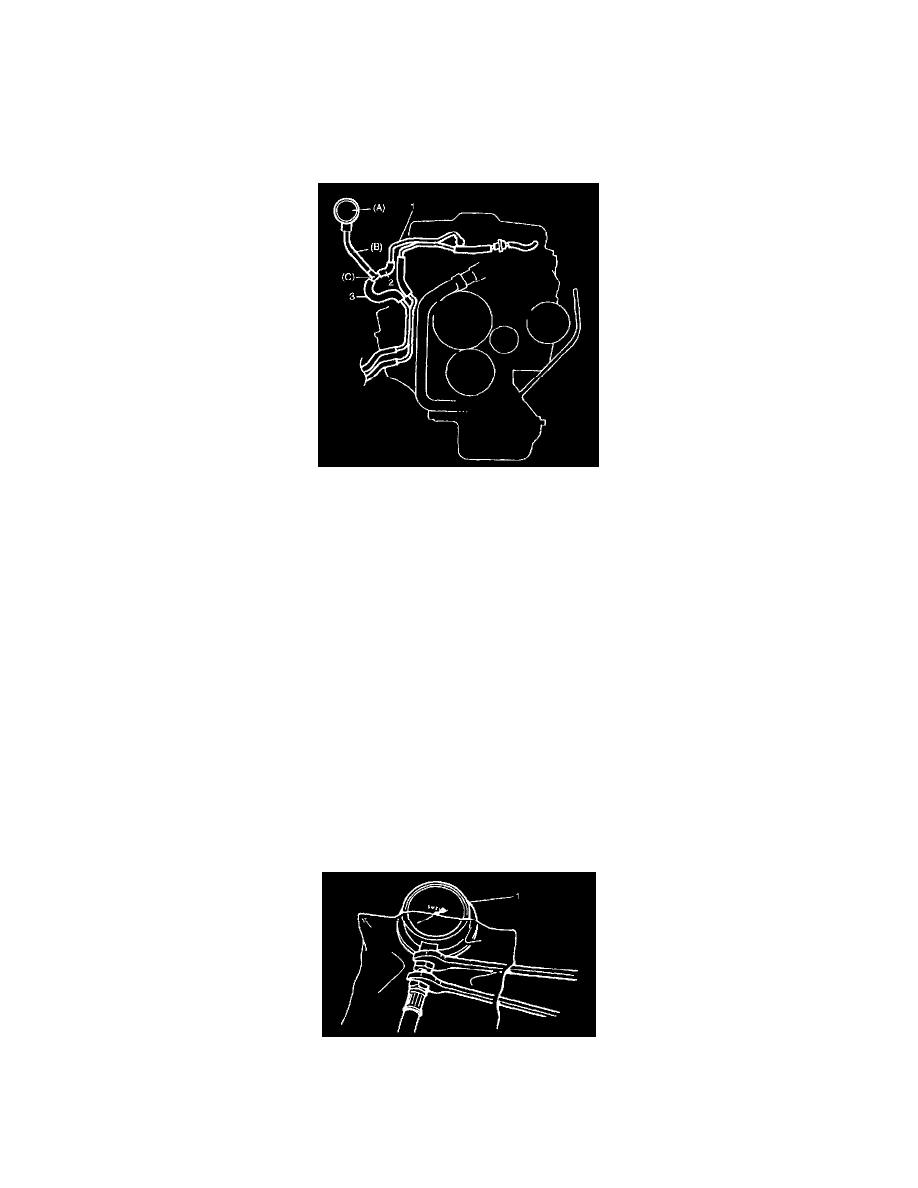XL-7 Standard 4WD V6-2.7L (2002)

Fuel Pressure: Testing and Inspection
Fuel Pressure Check
1. Relieve fuel pressure in fuel feed line referring to "Fuel Pressure Relief Procedure:".
2. Disconnect fuel feed hose from (3) delivery fuel feed pipe (1).
CAUTION: A small amount of fuel may be released when fuel feed hose is removed. Place container under the fuel feed hose or fuel feed pipe
with a shop cloth so that released fuel is caught in container or absorbed in cloth. Place that cloth in an approved container.
3. Connect special tools and hose (2) between fuel feed hose and fuel feed pipe as shown in figure, and clamp hose securely to ensure no leaks occur
during checking.
Special tool
(A) : 09912 - 58441
(B) : 09912 - 58431
(C) : 09912 - 58490
4. Check that battery voltage is above 11 V.
5. Turn ignition switch ON to operate fuel pump and after 3 seconds turn it OFF. Repeat this 3 or 4 times and then check fuel pressure.
6. Start engine.
7. Measure fuel pressure at idling.
If measure pressure doesn't satisfy specification, refer to "Fuel Pressure Inspection: " and check each possibly defective part. Replace if found
defective.
Fuel pressure specification
With fuel pump operating and engine stopped: 270 - 310 kPa (2.7 - 3.1 kg/sq.cm, 38.4 - 44.0 psi)
At specified idle speed: 210 - 260 kPa (2.1 - 2.6 kg/sq.cm, 29.8 - 37.0 psi)
With 1 min. after engine (fuel pump) stop (Pressure reduces as time passes): Over 200 kPa (2.0 kg/sq.cm, 28.4 psi)
8. After checking fuel pressure, remove fuel pressure gauge (1).
CAUTION: As fuel feed line is still under high fuel pressure, make sure to release fuel pressure according to the following procedures.
-
Place fuel container under joint.
-
Cover joint with rag and loosen joint nut slowly to release fuel pressure gradually.
